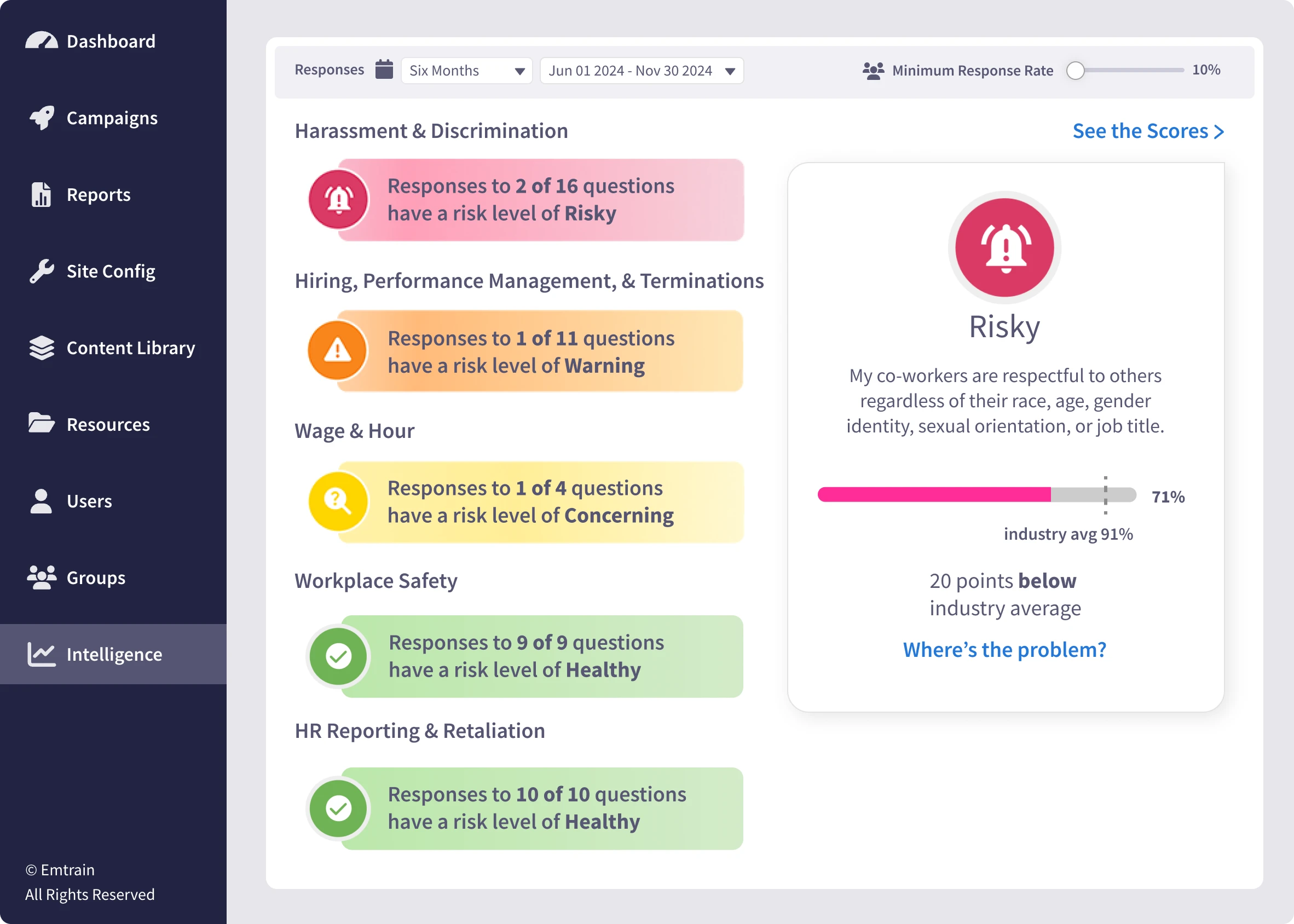Home » Concepts » Health & Safety » Reasonable suspicion
Reasonable suspicion is a critical standard that guides managers and compliance leaders in identifying potential misconduct or impairment at work. It is based on observable, objective facts—such as behavior, appearance, or performance—that suggest an employee may be under the influence of drugs or alcohol, or engaging in misconduct. This standard ensures decisions are made fairly and legally, protecting both employees and organizations from bias or assumption-driven actions. A well-implemented reasonable suspicion policy helps HR teams maintain safety, comply with workplace laws, and uphold the integrity of the organization’s culture.
Emtrain’s harassment training course is engaging, interactive, and designed to spot and reduce EEO risk.

The concept of reasonable suspicion originated in U.S. constitutional law (Terry v. Ohio, 1968), describing when authorities could lawfully investigate based on observable evidence. In workplace compliance, it evolved under the Drug-Free Workplace Act of 1988, mandating that organizations act on credible suspicion of substance use in safety-sensitive positions. Today, this standard extends beyond drug or alcohol cases to include data misuse, ethical breaches, and workplace safety violations.
Employers must balance due process and safety—acting promptly when risk indicators arise, but always based on documented, verifiable observations. For HR Managers, Compliance Officers, and People Leaders, reasonable suspicion provides the structure to intervene responsibly, mitigate risk, and preserve trust.
These signs must always be documented with specifics—time, date, observed behavior—and verified when possible. Training managers through Emtrain’s Drug and Alcohol Awareness Training ensures observations are handled lawfully and without prejudice.
To determine reasonable suspicion, consider the following 10 factors along with other relevant information, while taking into account the employee’s explanation for their behavior:
This 10-factor test helps HR and Compliance leaders ensure fair, consistent, and objective evaluation when assessing potential substance-related concerns.
A structured response process protects all parties and ensures compliance with state and federal standards, including OSHA safety requirements.
Effective implementation of a reasonable suspicion program relies on clarity, consistency, and training. Organizations should:
Each scenario underscores that reasonable suspicion is not about accusation—it’s about safety, consistency, and fairness.
These resources outline federal standards and practical steps for implementing compliant and humane workplace substance policies.
Reasonable suspicion is the cornerstone of ethical and compliant workplace oversight. It enables leaders to act responsibly, protect employee wellbeing, and maintain legal integrity. For HR Managers, it mitigates exposure and promotes accountability; for Compliance Officers, it ensures documentation and fairness; and for People Leaders, it strengthens culture and trust.
Emtrain’s comprehensive learning ecosystem—including Drug and Alcohol Awareness Training, Workplace Safety Training, and Disability Protections (ADA) Training—empowers organizations to act decisively and compliantly when reasonable suspicion arises.
In this brief video scenario, an employee shares a real workplace encounter that highlights the importance of recognizing red flags:
A woman arrived at the front desk claiming to be selling something for the business owner but had no business card or identification. When informed that the owner was unavailable, she became agitated, accusing the front desk manager of lying and declaring, “They can’t make me leave.” Her erratic behavior made staff uncomfortable, prompting an employee to call security.
This incident demonstrates how emotional instability, aggressive speech, and refusal to comply with workplace boundaries can serve as warning signs of potential risk. Recognizing and responding appropriately to these behaviors protects employees and maintains a safe, professional environment.